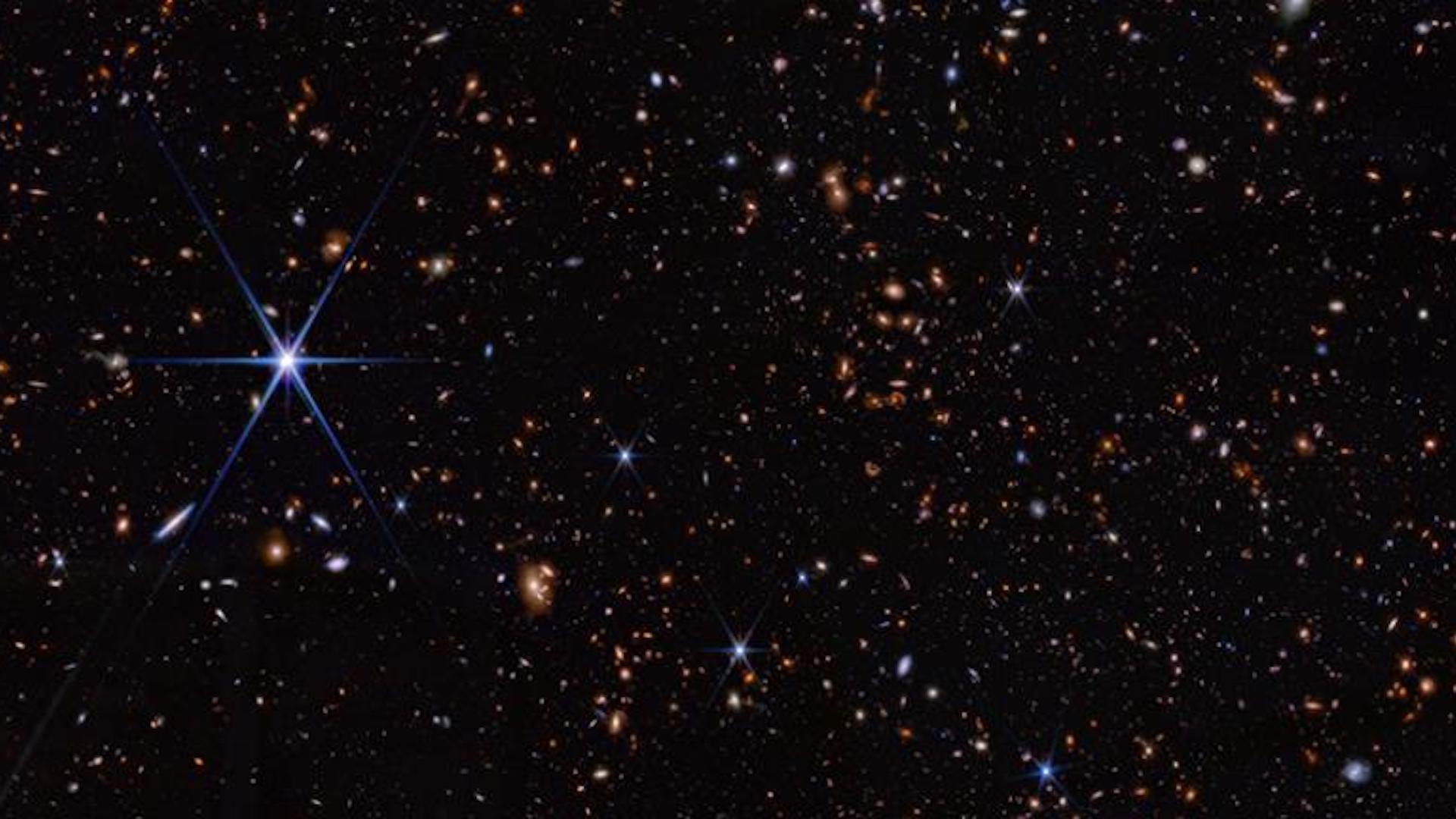James Webb telescope finds carbon at the dawn of the universe, challenging our understanding of when life could have emerged
The James Webb Space Telescope has found carbon in a galaxy just 350 million years after the Big Bang. That could mean life began much earlier too, a new study argues.

The James Webb Space Telescope (JWST) has detected a key building block of life at the dawn of the universe, upending what we know about the first galaxies.
The discovery — a cloud of carbon in a distant and compact galaxy as it appeared just 350 million years after the Big Bang — marks the earliest detection of an element other than hydrogen in the universe. The results have been accepted for publication in the journal Astronomy & Astrophysics, and a preprint version can be found on arXiv.
"Earlier research suggested that carbon started to form in large quantities relatively late — about one billion years after the Big Bang," co-author Roberto Maiolino, a professor of experimental astrophysics at the Kavli Institute for Cosmology at the University of Cambridge, said in a statement. "But we've found that carbon formed much earlier — it might even be the oldest metal of all."
Astronomers classify elements heavier than hydrogen and helium as metals. That's because, aside from hydrogen and trace amounts of lithium, these elements were forged inside the fiery furnaces of stars and distributed throughout the universe by star explosions called supernovas.
This process of heavy element production and seeding was once thought to take many star lifetimes before elements heavy enough to form planets were widely available. But the new discovery has challenged this preconception.
"We were surprised to see carbon so early in the universe, since it was thought that the earliest stars produced much more oxygen than carbon," Maiolino said. "We had thought that carbon was enriched much later, through entirely different processes, but the fact that it appears so early tells us that the very first stars may have operated very differently."
Related: James Webb telescope discovers earliest galaxy in the known universe — and its shockingly big
Sign up for the Live Science daily newsletter now
Get the world’s most fascinating discoveries delivered straight to your inbox.
To make the discovery, astronomers used JWST to peer at an ancient galaxy known as GS-z12. Using the telescope's Near Infrared Spectrograph, the researchers broke down this early light into a spectrum of colors from which they could read the chemical fingerprint of the early galaxy.
What they found in the remote galaxy, which was 100,000 times less massive than the Milky Way, were traces of oxygen and neon mixed with a strong signal of carbon.
Exactly how carbon could have formed so early in the universe's life is unclear, although it could be due to stars collapsing with less energy than initially thought, according to the researchers. As carbon would have formed in the stars' outer shells, this could have enabled it to escape and seed the early universe sooner than expected instead of being sucked inside the black holes formed from the collapsing stars.
"These observations tell us that carbon can be enriched quickly in the early universe," lead author Francesco D'Eugenio, an astrophysicist at the Kavli Institute for Cosmology, said in the statement. "And because carbon is fundamental to life as we know it, it's not necessarily true that life must have evolved much later in the universe. Perhaps life emerged much earlier — although if there's life elsewhere in the universe, it might have evolved very differently than it did here on Earth."

Ben Turner is a U.K. based staff writer at Live Science. He covers physics and astronomy, among other topics like tech and climate change. He graduated from University College London with a degree in particle physics before training as a journalist. When he's not writing, Ben enjoys reading literature, playing the guitar and embarrassing himself with chess.









